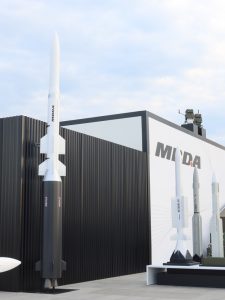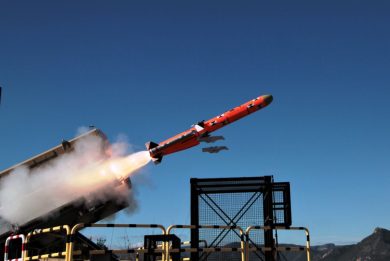
PAS 2023 – MBDA details the HYDIS² hypersonic defence system programme
With the hypersonic threat becoming more real and more dangerous, defending against those assets large areas is one of the main themes at the 2023 edition of the Paris Air Show, MBDA detailing the HYDIS2 programme the company is leading
The evolving threat in the hypersonic world will definitely increase its performances, hypersonic cruise missiles with manoeuvre capability flying in an altitude interval, between 30 and 50 km, that is not covered by current systems, which moreover are not designed to counter manoeuvring threats but rather ballistic ones. To counter future threats sensors and effectors will not be sufficient, a global strategy being required according to MBDA experts, considering what needs to be protected, which assets must be defended, and the sustainability of such defence. The unpredictability that cruise missiles add to the equation, which increases with speed, means that instruments to allow narrowing the uncertainty must be developed, to avoid a single hypersonic attack asset obliging the defensive system to fire multiple missiles, transforming a one-shot attack into a saturation one.
Sensors will definitely be distributed, and the earlier the predictable target is identified the best, decision making tools quite probably based on artificial intelligence being needed to shorten the sensor to shooter cycle. Moreover, MBDA experts underlined, considering speeds involved the windows of opportunity is relatively short, and there is no chance to re-engage the target.
That said, in 2023 the European Defence Fund issued an Invitation to Tender to which MBDA responded last May, this being now under evaluation.
Based on that the European missile company launched HYDIS2 (Hypersonic Defence Interceptor Study), a concept and maturation programme lasting three years that sees four nations involved, France, Germany, Italy and the Netherlands.

MBDA started working on hypersonic defence systems at least five years ago, and it is now developing three missile concept studies, two of them being three-stage interceptors and one a two-sage missile. On their side nations are talking to each other to identify and harmonize requirements, the end state being the selection of one of the proposed configurations that should lead to an operational system in the 2030s.
The four aforementioned nations are the programme partners, among them Spain, Sweden, Finland, Romania, Hungary and Austria, the HYDIS2 programme involving 14 European Union nations, 19 major industrial partners and over 30 SMEs. All players planned to gather at Le Bourget on Day 2 of the Paris Air Show for a kick off meeting that will mark the start of the programme.
Not many technical details were provided, the programme being in its infancy, albeit MBDA has a strong background that also allows the use of well developed simulation systems. What is quite clear is that the agility in the final attack phase, which will be head-to-head, will be hybrid, as at certain altitude the thin air does not allow aerodynamic surfaces to generate the required forces, hence thrusters will be used; MBDA experts underlined however that these will have to interact with the air still existing, which is not the case in space vessels that travel in the void. They also underlined that some technology bricks are in their infancy, TRL 1-2, without specifying more.
The 80 million Euro provided by the European Defence Fund will definitely not be sufficient to reach the end of the programme, the four nations certainly adding some to allow its completion. The HYDEF2 results will be exploited to advance the PESCO Twister programme, and more precisely the effectors segment.
Photos by P. Valpolini



